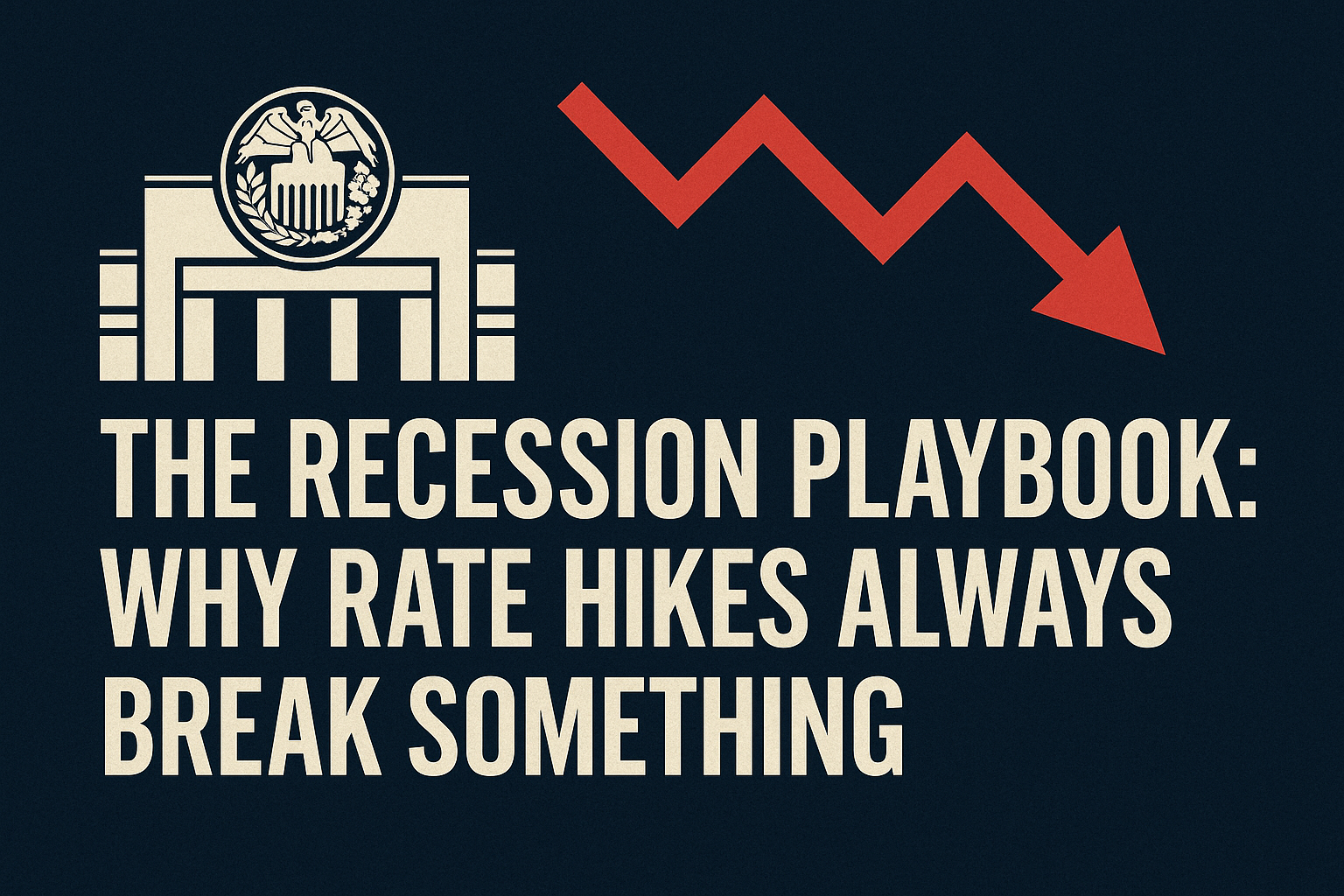The Recession Playbook: Why Rate Hikes Always Break Something (Part 1)
Written by Arbitrage • 2025-11-19 00:00:00

Every tightening cycle begins with optimism. Inflation rises. The Federal Reserve responds. Policymakers say the economy is strong enough to handle higher rates. Markets hope for a soft landing. Households want to believe the turbulence is temporary.
But the pattern never changes. The Fed raises rates. Borrowing costs spike. Credit tightens. And somewhere in the financial system, a weak point finally cracks. This sequence has repeated for more than fifty years. It has one goal, to slow inflation by slowing demand. And it has one final act: something breaks.
To understand why, we need to look at how monetary policy actually works, what the Fed controls, what it does not, and why raising rates almost always pushes an economy into recession.
Short-Term Rates vs Long-Term Rates: What the Fed Really Controls
Most people believe the Federal Reserve controls all interest rates. The truth is far more limited.
The Fed controls:
- The federal funds rate
- Short-term liquidity
- Repo markets
- Overnight borrowing costs
These are the tools that influence the very front end of the yield curve. When the Fed hikes rates, it is adjusting the cost of borrowing for one day, one week, or one month.
The Fed does not control:
- Ten-year Treasury yields
- Thirty-year yields
- Mortgage rates
- Corporate credit yields
- Market expectations for future growth
These are set in the open market, not by policymakers. Investors decide long-term rates because they price in growth, inflation, and risk. This is the key distinction. The Fed controls the cost of money in the short term. The market controls the cost of money in the long term. Recessions begin when those two forces collide.
How Rate Hikes Work in the Real Economy
The goal of raising interest rates is simple. The Fed wants to slow demand. But the process is complex and slow. It follows a chain reaction often called the monetary transmission mechanism.
- Borrowing becomes more expensive.
- Mortgages and business loans rise in cost.
- Lenders tighten their standards.
- Companies reduce hiring and investment.
- Households pull back on discretionary spending.
- Liquidity dries up across the financial system.
- Inflation cools because demand cools.
This entire sequence can take twelve to eighteen months. Because of that lag, policymakers often overshoot. By the time inflation finally comes down, the economy is already weakening. But the tightening continues anyway because the data the Fed watches is backward looking. That overshoot is usually what triggers a recession.
The Yield Curve: The Market's Recession Alarm
The most reliable recession signal in modern finance is an inverted yield curve. This occurs when short-term rates rise above long-term rates. It is a warning from the bond market that the Fed has tightened conditions enough to slow the economy.
Why does inversion work so well? Banks borrow at short-term rates and lend at long-term rates. This is their core business model. When short-term rates rise above long-term rates, the incentive to lend disappears. Credit slows. Liquidity evaporates. Growth weakens.
An inverted curve has preceded every major US recession since the 1960s. It does not tell you when the recession starts. It simply confirms that the recession has moved from possible to probable.
Come back tomorrow for Part 2 of this topic!